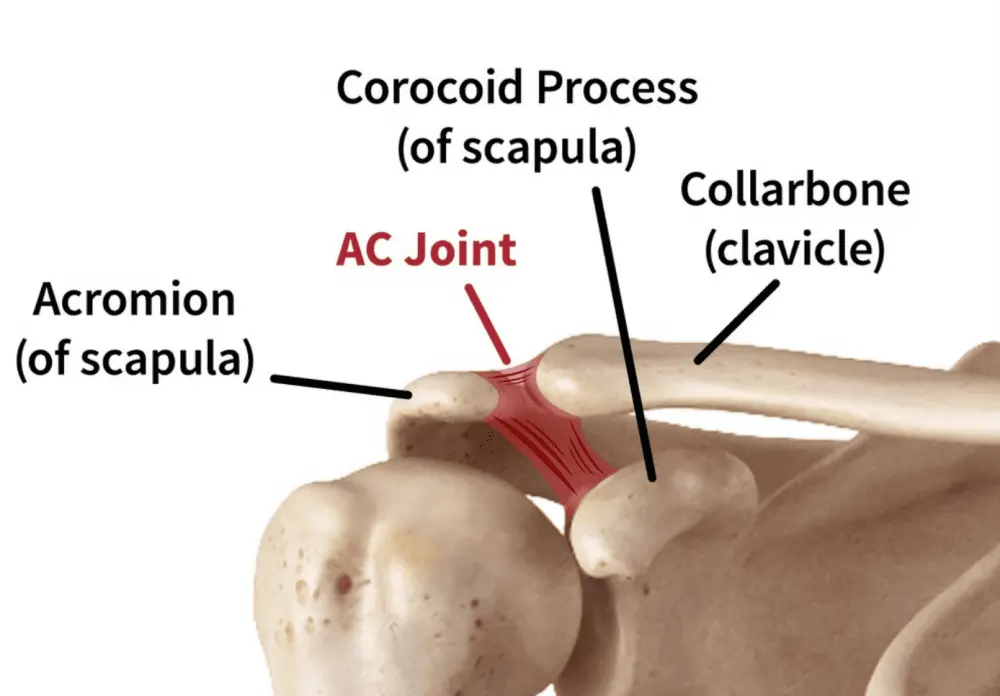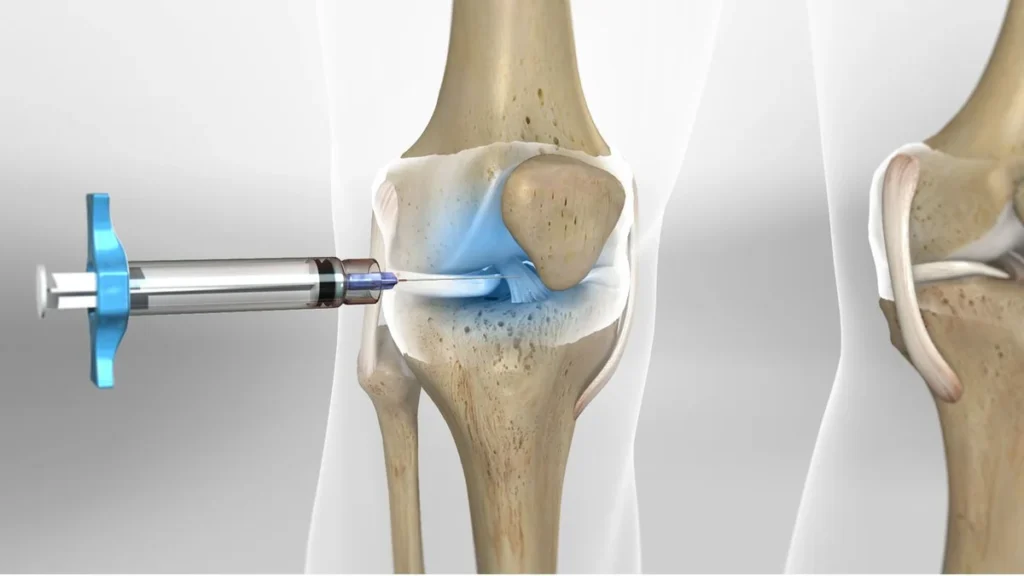This article from the Limb Lengthening Center of Iran focuses on the Shoulder Acromioclavicular Joint Injury. The shoulder comprises several joints, one of the most important being the joint between the collarbone and the shoulder blade. This joint, known as the acromioclavicular joint, can dislocate due to impacts on the shoulder.

Anatomy of Shoulder Joints
The clavicle or collarbone articulates with two other bones at its ends. Internally, the collarbone joins with the sternum (breastbone), and laterally, it articulates with the scapula (shoulder blade). The part of the shoulder blade that joins with the collarbone is a broad projection known as the acromion. The joint between these two bones is called the acromioclavicular joint.
The joint between the sternum and the collarbone is called the sternoclavicular joint. The stability of the acromioclavicular joint largely depends on the surrounding ligaments.
The most important ligaments are the coracoclavicular ligaments, which are located between the coracoid process and the collarbone. These ligaments themselves consist of two parts: the trapezoid ligament and the conoid ligament.
Injury to the Joint between the Collarbone and Shoulder Blade
Injuries to the acromioclavicular joint are more common than those to the sternoclavicular joint. This joint has a weak joint capsule that can easily be damaged from falling onto the shoulder, often seen in athletes.
If severe impacts are applied to the shoulder, the acromioclavicular joint capsule may tear while the coracoclavicular ligament remains intact. In this case, the outer edge of the collarbone, usually aligned with the acromion edge, shifts upwards. This condition is known as a subluxation of the acromioclavicular joint.
If the injury is severe enough to tear the coracoclavicular ligament, the outer edge of the collarbone completely shifts upwards and loses all connection with the acromion. This condition is called a dislocation of the acromioclavicular joint.
Symptoms of Acromioclavicular Joint Injury
In the case of dislocation of the Acromioclavicular Joint, when looking at the patient’s shoulder, the outer end of the collarbone appears prominent and positioned upwards. The shoulder is painful, and pressing on the outer end of the collarbone exacerbates the pain. Moving the shoulder joint is also painful.
Accurate diagnosis of this injury is made through radiology, where complete displacement and upward movement of the outer end of the collarbone are observed. In the case of a subluxation of this joint, significant displacement may not be visible in radiography. In such cases, special imaging is done where the patient stands with weights hanging from both wrists and then radiography of both shoulders is performed.
The doctor can identify differences by comparing the images of the left and right shoulders, determining if the outer edge of the collarbone in the injured joint is slightly higher than the acromion.
Treatment of Acromioclavicular Joint Injuries
In cases of subluxation (partial dislocation) of the acromioclavicular joint, where there is only slight displacement, repositioning may not be necessary. Treatment typically involves immobilizing the patient’s arm by hanging it from the neck for two weeks. After this period, active shoulder movements are initiated to prevent further movement limitations.
Surgical Treatment of Acromioclavicular Joint Dislocation
The treatment of a dislocated acromioclavicular joint is primarily through surgical intervention. In this procedure, an orthopedic surgeon first aligns the outer end of the collarbone with the acromion process and then fixes the collarbone in place. To fix the collarbone, the surgeon may use a screw to attach the collarbone to the coracoid process, connect the acromion to the collarbone using several pins, or hold the collarbone in place against the acromion with a special plate.
During the surgery, the surgeon may either repair the coracoclavicular ligament or leave it untouched to heal naturally. If an acromioclavicular joint dislocation remains untreated for an extended period, it becomes chronic, making the treatment more challenging than in cases of acute dislocation.

To make an appointment or get an online consultation with Dr. Nader Motallebi Zadeh, Limb lengthening surgeon, proceed here.
Treatment of Chronic Dislocation of the Acromioclavicular Joint
In chronic cases, the orthopedic surgeon initially removes a few centimeters of the collarbone near the joint. Then, the surgeon detaches the coracoacromial ligament from its attachment to the coracoid process and attaches it to the remaining end of the collarbone. Finally, the collarbone is secured to the coracoid process with a screw.



